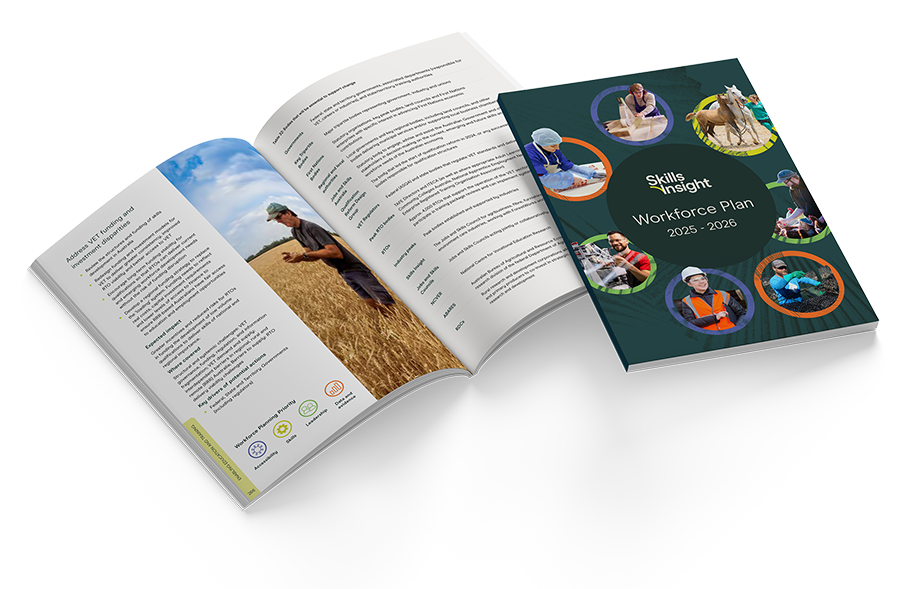Workforce planning is essential to understanding the challenges and opportunities shaping workforce development across the industries we support.
Workforce planning helps build a shared vision of workforce priorities and identifies strategies to address key challenges and skill needs.
By combining statistical data with insights from industry, it supports informed decision-making and highlights where action is needed to strengthen workforce capability.
This work guides Skills Insight’s priorities and project submissions, while also providing industry bodies, employers and other stakeholders with evidence to inform their own workforce planning, training strategies and investment in skills.
Workforce planning is an ongoing process that explores and integrates data from the following areas:
These insights are tested with industry leaders and the Stakeholder Forum to identify and confirm strategic workforce planning priorities.

A Workforce Plan is produced annually as part of the workforce planning process. Each annual edition builds on the last, considering the latest stakeholder feedback and newly released data.
Previous Workforce Plans
Data Dashboard
The Skills Insight Data Dashboard brings together workforce, occupation, and training data to provide an overview of 13 industry groups. It highlights demographics, employment trends, top employing occupations, and VET activity.
Use this Data Dashboard to explore data and insights relevant to the industries you’re interested in.
Further information on how this data links to real-world experiences and stakeholder insights is detailed in our Workforce Plan 2025–2026.



